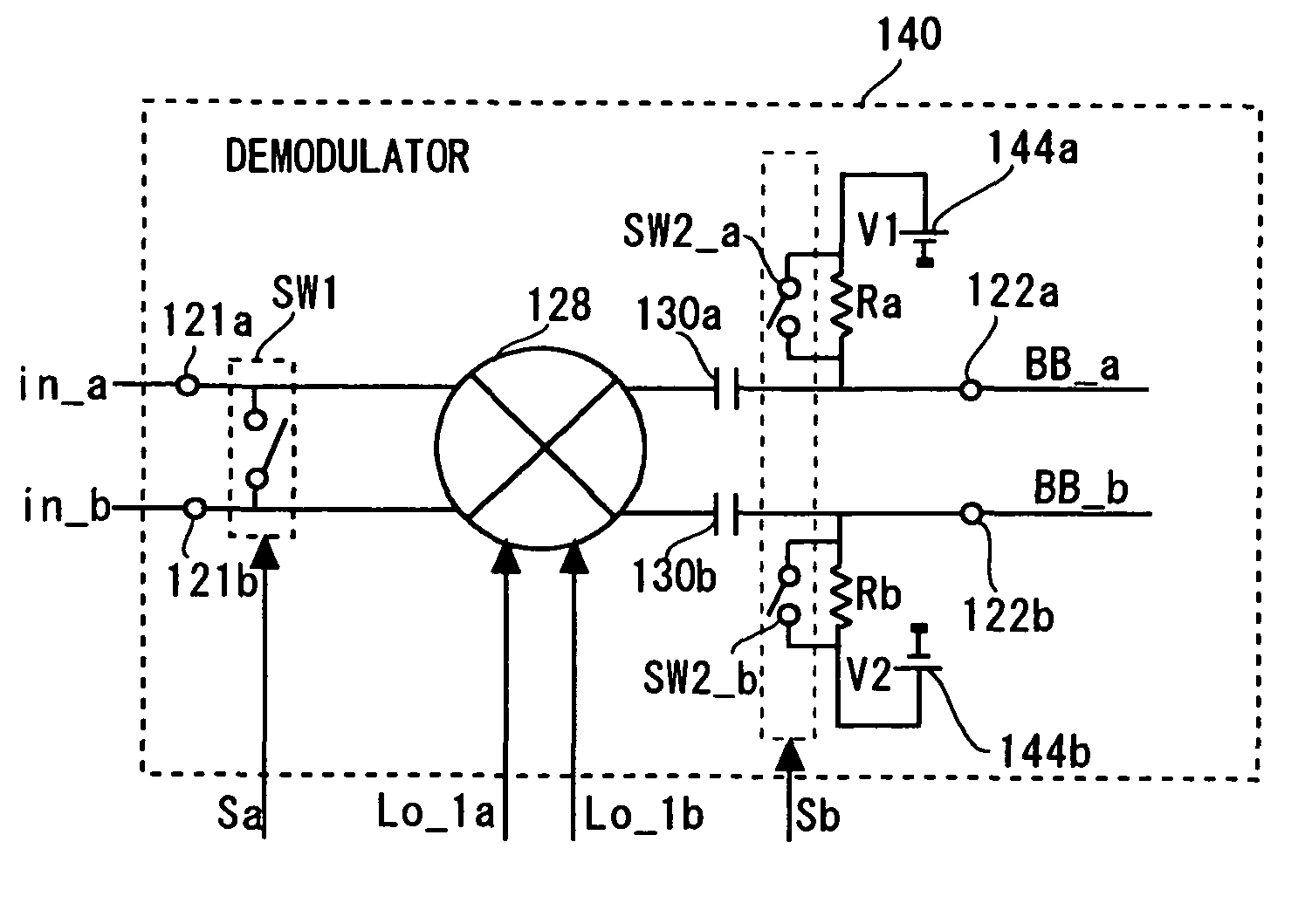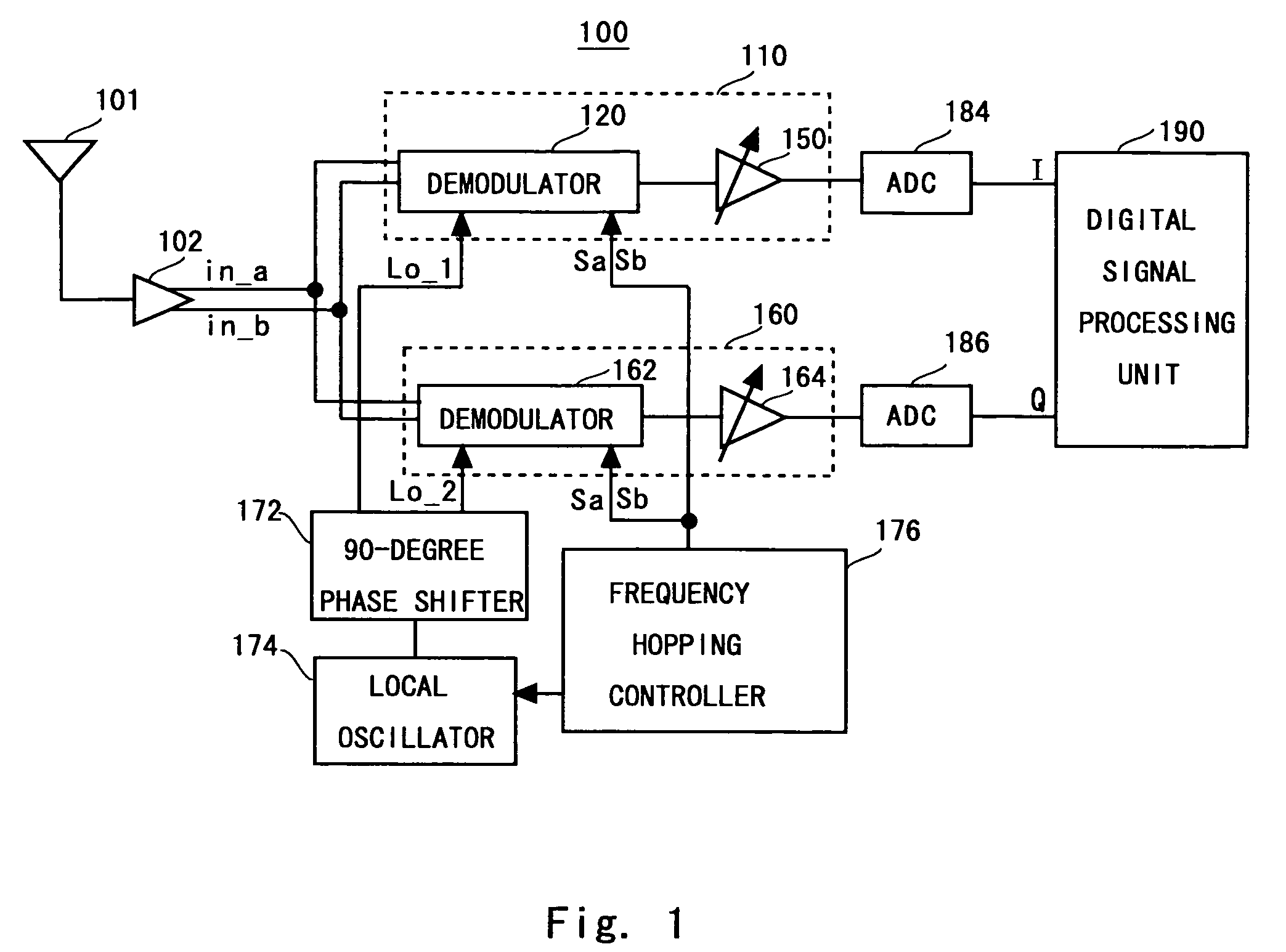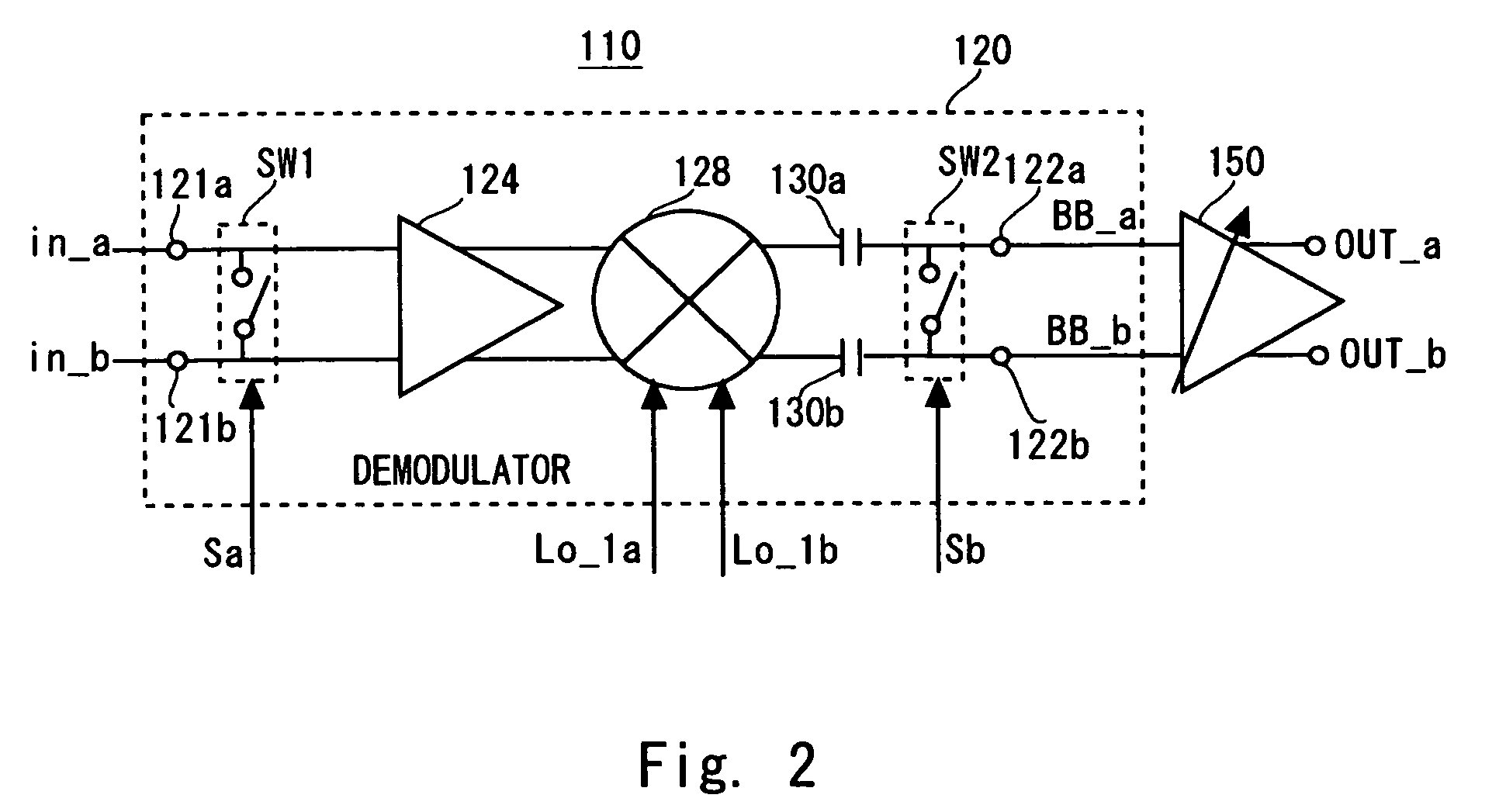Receiving apparatus and signal processing method
a technology of receiving apparatus and signal processing method, which is applied in the direction of multiplex communication, orthogonal multiplex, pulse technique, etc., can solve the problems of increasing the number of required bits for the adc, difficult to remove the dc offset within such a short switching time, and deteriorating signals, so as to reduce the increase in circuit size and remove the dc offset. reliably
- Summary
- Abstract
- Description
- Claims
- Application Information
AI Technical Summary
Benefits of technology
Problems solved by technology
Method used
Image
Examples
first embodiment
[0036]FIG. 1 shows a receiving apparatus 100 according to a first embodiment of the present invention. The receiving apparatus 100 is such that a receiving apparatus according to the present invention is applied to a receiving side of the MB-OFDM communication system, and it is a radio receiving apparatus of direct-conversion type. As shown in FIG. 1, the receiving apparatus 100 includes an antenna 101 that acquires a communication signal (RF signal), a low noise amplifier 102 that amplifies the RF signal which is acquired by the antenna 101 and converts the signal into differential signals in_a and in_b. The receiving apparatus 100 also includes a first processing circuit 110 that obtain an I-axis signal from the differential signals in_a and in_b, an ADC 184, a second processing circuit 160 that obtain a Q-axis signal from the differential signals in_a and in_b, an ADC 186, and a digital signal processing unit 190 that performs signal processing in a subsequent stage to the ADC 18...
second embodiment
[0057]According to the first embodiment of the present invention shown in FIG. 1, the output terminals 122a and 122b of the demodulator 120 are short-circuited by the switch SW2 in synchronization with frequency switching of a local signal, thereby accumulating changes in DC offset due to frequency hopping in the capacitors 130a and 130b so as to substantially eliminate a voltage difference between the output terminals 122a and 122b. Another technique may be used as long as the changes in DC offset due to frequency hopping can be accumulated in the capacitors 130a and 130b during the guard interval period so that a voltage difference between the output terminals 122a and 122b is substantially eliminated. As a second embodiment, another demodulator which may be used in the receiving apparatus 100 is described hereinafter with reference to FIG. 4.
[0058]FIG. 4 shows a demodulator 140. In the followings, only differences between the demodulator 140 and the demodulator 120 are described,...
third embodiment
[0063]FIG. 5 shows a receiving apparatus 200 according to a third embodiment of the present invention. The receiving apparatus 200 is also a receiving apparatus in the MB-OFDM communication system, and it has a functional block having the same function as each element of the receiving apparatus 100 shown in FIG. 1. In the receiving apparatus 200, a first processing circuit 210 and a second processing circuit 260 are different from the first processing circuit 110 and the second processing circuit 160 in the receiving apparatus 100. The other elements are the same as equivalent elements in the receiving apparatus 100, and they are denoted by the same reference symbols as in the receiving apparatus 100 and not described in detail herein.
[0064]The first processing circuit 210 and the second processing circuit 260 have the same configuration and function except that the phases of input local signals are different by 90 degrees. Thus, only the first processing circuit 210 is described he...
PUM
 Login to View More
Login to View More Abstract
Description
Claims
Application Information
 Login to View More
Login to View More - R&D
- Intellectual Property
- Life Sciences
- Materials
- Tech Scout
- Unparalleled Data Quality
- Higher Quality Content
- 60% Fewer Hallucinations
Browse by: Latest US Patents, China's latest patents, Technical Efficacy Thesaurus, Application Domain, Technology Topic, Popular Technical Reports.
© 2025 PatSnap. All rights reserved.Legal|Privacy policy|Modern Slavery Act Transparency Statement|Sitemap|About US| Contact US: help@patsnap.com



